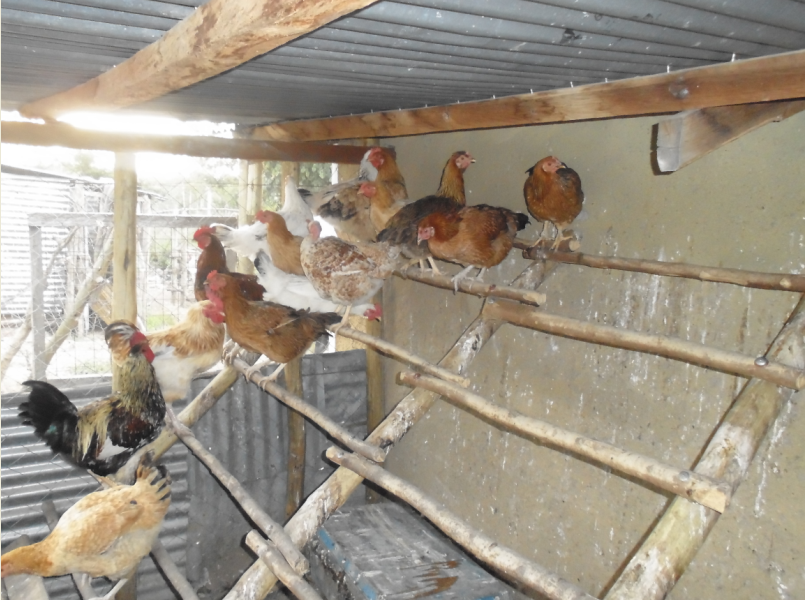The Importance of Perching in Kienyeji Chicken Farming
 One of our key suggestions in our KARI Improved Kienyeji Chicken Farming ManualOne of our key proposals in our KARI Improved Kienyeji Chicken Farming Manual is that you set up roosts when you are building the kienyeji chicken house. This can be settled on the sides of the poultry house or at the extraordinary closures of the poultry house. While the chicken has been trained for a huge number of years, it has never lost the "wild" inclination to perch.
One of our key suggestions in our KARI Improved Kienyeji Chicken Farming ManualOne of our key proposals in our KARI Improved Kienyeji Chicken Farming Manual is that you set up roosts when you are building the kienyeji chicken house. This can be settled on the sides of the poultry house or at the extraordinary closures of the poultry house. While the chicken has been trained for a huge number of years, it has never lost the "wild" inclination to perch.
The perching conduct will no doubt happen during the evening since the winged creatures are in all likelihood encouraging or rummaging inside the unfenced framework amid the day. The roosts are for the most part utilized by the layers when you are raising the colorful breeds. The ovens of the colorful assortment won't require the roosts because of their sheer weight. With regards to the KARI Improved Kienyeji Chicken, the roosts are surely an absolute necessity have when fabricating the Kienyeji chicken house.
Research into the poultry creation strategies demonstrates that chicken incline toward utilizing roosts. This is the reason it is imperative to incorporate these in the lodging design. As we will demonstrate later, there are various different advantages related with the utilization of the roosts in the chicken generation.
The Benefits of Perches
In the layers, roosts help in alleviating pressure and furthermore anticipate untoward conduct, for example, human flesh consumption. At the point when the hens can't perch around evening time, they show a baffled conduct and this can decline into other "standoffish" conduct, for example, battling. They additionally help in decreasing certain wounds especially where chicken are stuffed.
The hens in your brood which are bring down in the pecking request will make utilization of the roosts to avoid pecking from the forceful and predominant hens. They will generally take the higher roosts with a specific end goal to be careful. This capacity to escape from the more forceful hens will lessen occurrences of wounds and even fatalities in the brood which are normally perpetrated by forceful pecking on the head and the neck or through human flesh consumption which happens when there is serious plume pecking. Roosts likewise help in building more grounded and more advantageous bones in the chicken.
There is another imperative advantage of the roosts which will wind up plainly clear when you are cleaning the poultry house. Since the roosting keeps the flying creatures off the floor during the evening, the droppings have a tendency to aggregate in one place under the perch territory while alternate parts of the kienyeji chicken house remain generally more clean. This influences the cleaning to process a great deal less demanding.
Models for introducing the roosts in the poultry house
It is suggested that you permit no less than 15cm or 6 creeps of roost space per hen with regards to introducing the roosts for the general hens. With regards to the KARI enhanced Kienyeji chicken, permit 18cm or 7 creeps of roost space per hen. Permit a level space of up to 30cm between the roosts when you are introducing them next to each other. Give a stipend of 20cm or 8 creeps between the roosts and the dividers. The roosts must be round and with smooth edges and not very expansive in order to oblige the chicken feet.
Roosts Installation Guidance
In the event that you are intending to utilize the roosts in your poultry generation, it is imperative that these are presented at an early age when they are as yet youthful as late acquaintance can debilitate their capacity with utilize them.
The roosts ought to be situated in regions of the poultry house where they won't meddle with development and day by day tend to the chicken, for example, the encouraging, watering, cleaning, or the social occasion of eggs. These ought to be in the corners or the extraordinary closures of the house.
We went to that same school this winter, where we studied below zero egg cultivating with a minor in quietude.